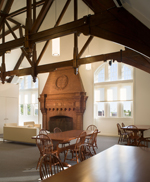Animating Archives: Making New Media Matter
The paradox of modern media is that it is everywhere and nowhere at once. New media accentuates the “frenzy of the visible” ushered in by film and photography so that we now live in a world saturated with screens, images and objects—from gigantic public screens to cell phones—all demanding that we look at them.
At the same time, however, they also work invisibly, turning every day events into fodder for surveillance, adding an invisible layer of code—and a formerly inconceivable amount of data—onto the world. The uptake of these digital telecommunications technologies is thus generating new questions, methods and approaches, the more pressing of which are focused on the archive and archival practice.
How does the new vernacular archive—the flood of YouTube videos, cell phone novels and Facebook entries, as well as “bottom up” archiving sites such as del.icio.us—challenge the traditional function of “public records,” their place and their authority? How do changing archiving formats change history (both in terms of historical events and narratives)? What new global and globalizing memories and fevers are infecting our archives?
The
The Malcolm S. Forbes for Research in Culture and Media Studies and the Cogut Center for the Humanities are collaborating to bring together three dozen leading scholars and practitioners in the field of new media to share their thoughts and projects under one roof. The result is a ground-breaking conference entitled "Animating Archives: Making New Media Matter." The conference runs from December 3-5, 2009 at the Cogut Center's home, historic Pembroke Hall on the campus of Brown University, Providence, RI.

Want to see the conference videos? We have them available on iTunes University. The keynote address and each of the seven sessions is available at the click of your mouse.

